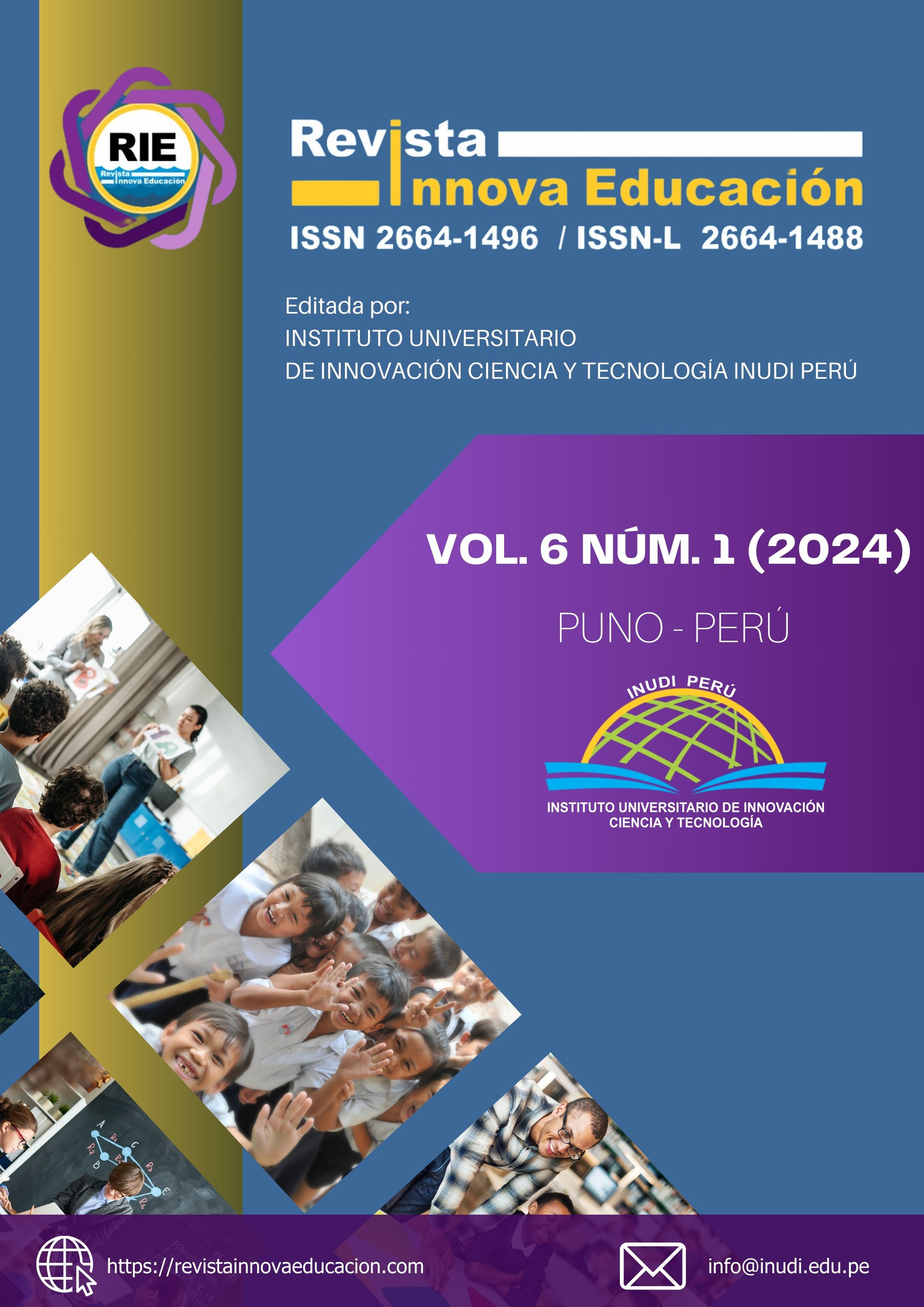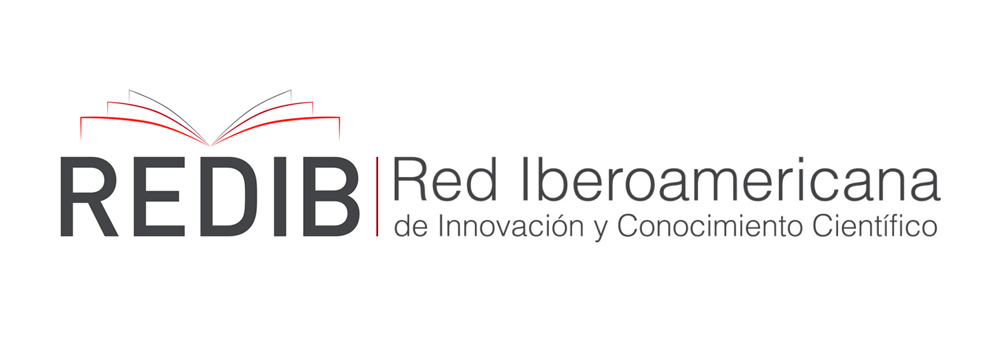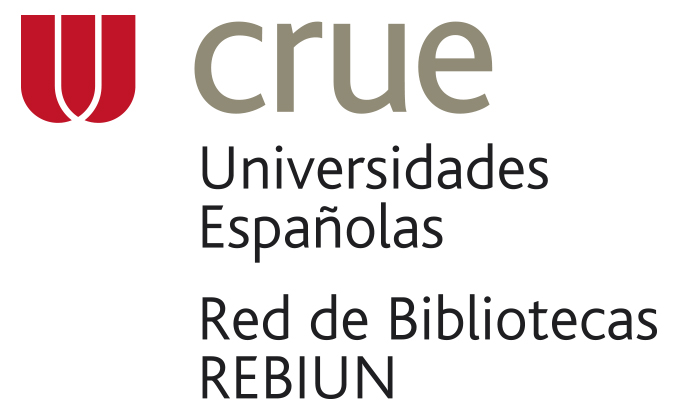Conceber uma intervenção pedagógica híbrida para apoiar a aprendizagem linguística e intercultural
DOI:
https://doi.org/10.35622/j.rie.2024.01.004Palavras-chave:
AICLE, aprendizaje intercultural, clase de idiomas, ABP, intervención pedagógicaResumo
Este artigo de análise aborda a necessidade de introduzir a aprendizagem intercultural na sala de aula de línguas. A literatura oferece abordagens e métodos linguísticos que podem beneficiar potencialmente o ensino de línguas estrangeiras, transformando a prática tradicional num ensino mais ativo, participativo e intercultural. Um ensino abrangente de línguas estrangeiras/segundas exige a inclusão da componente intercultural, a fim de dotar os aprendentes da capacidade de interagir em contextos cada vez mais interculturais. Assim, este trabalho propõe um modelo de conceção de atividades linguísticas e interculturais na sala de aula de línguas. A metodologia aplicada neste trabalho baseia-se numa abordagem qualitativa através da revisão da literatura para recolher ideias que facilitem uma abordagem intercultural baseada numa pedagogia híbrida que funde a Aprendizagem Integrada de Línguas e Conteúdos (AILC) e a Aprendizagem Baseada em Projetos (ABP), a fim de conceber um modelo para a implementação de uma experiência linguística intercultural centrada no aluno. Os resultados sugerem que os professores de línguas podem proporcionar oportunidades de aprendizagem positivas para os alunos desenvolverem a competência intercultural, planeando e mediando atividades linguísticas interculturais na sala de aula de língua estrangeira/língua segunda. Os aprendentes de línguas podem alargar as suas competências e aptidões linguísticas de uma forma mais autêntica e significativa quando o ensino é enriquecido com elementos interculturais. A conceção descrita pode servir de modelo linguístico-intercultural para o ensino e o desenvolvimento da competência comunicativa intercultural com o objetivo de melhorar a comunicação intercultural.
Referências
Arshavskaya, E. (2018). Promoting intercultural competence in diverse US classrooms through ethnographic interviews. Teaching Education, 29(2), 194–210. https://doi.org/10.1080/10476210.2017.1373277 DOI: https://doi.org/10.1080/10476210.2017.1373277
Auger, N. (2023). The Language Diamond: An Intercultural Model to Teach and Learn (through) Languages. Education Sciences 13(5), 1-32. https://doi.org/10.3390/educsci13050520 DOI: https://doi.org/10.3390/educsci13050520
Baker, W. (2011). Intercultural awareness: modelling an understanding of cultures in intercultural communication through English as a lingua franca. Language and Intercultural Communication, 11(3), 197-214. https://doi.org/10.1080/14708477.2011.577779 DOI: https://doi.org/10.1080/14708477.2011.577779
Barquero, W. (2022). Analisis de Prisma como Metodología para Revisión Sistemática: una Aproxi-mación General. Saúde Em Redes, 8, 339–360. https://doi.org/10.18310/2446-4813.2022v8n-sup1p339-360 DOI: https://doi.org/10.18310/2446-4813.2022v8nsup1p339-360
Bender, W. N. (2012). Project-based learning: Differentiating instruction for the 21st century. Corwin Press.
Bisquerra, A. R. (2003). Modelos de orientación e intervención psicopedagógica. CISS Praxis.
Black, P., & Wiliam, D. (2018). Classroom assessment and pedagogy. Assessment in Education: Principles, Policy & Practice, 25(6), 551-575. https://doi.org/10.1080/0969594X.2018.1441807 DOI: https://doi.org/10.1080/0969594X.2018.1441807
Borghetti, C. (2019). Interculturality as collaborative identity management in language education. Intercultural Communication Education, 2(1), 20–38. https://doi.org/10.29140/ice.v2n1.101 DOI: https://doi.org/10.29140/ice.v2n1.101
Busse, V., & Krause, U. (2016). Instructional methods and languages in class: A comparison of two teaching approaches and two teaching languages in the field of intercultural learning. Learning and Instruction, 42, 83-94. https://doi.org/10.1016/j.learninstruc.2016.01.006 DOI: https://doi.org/10.1016/j.learninstruc.2016.01.006
Byram, M. (2020). Revisiting Teaching and assessing intercultural communicative competence. Multilingual Matters. DOI: https://doi.org/10.21832/BYRAM0244
Byram, M., & Fleming, M. (2009). Perspectivas interculturales en el aprendizaje de idiomas. Edinumen.
Byram, M., Gribkova, B., & Starkey, H. (2002). Developing the Intercultural Dimension in Language Teaching: a practical introduction for teachers. Council of Europe.
Casoli-Uvsløkk, J., & Brevik, L. M. (2023). Intercultural approaches to second and foreign language instruction: A longitudinal video study. Teaching and Teacher Education, 134,1-14. https://doi.org/10.1016/j.tate.2023.104309 DOI: https://doi.org/10.1016/j.tate.2023.104309
Clouet, R. (2012). Studying the role of intercultural competence in language teaching in upper secondary education in the Canary Islands, Spain. Onomázein, 26, 309-334. https://www.redalyc.org/articulo.oa?id=134525391011 DOI: https://doi.org/10.7764/onomazein.26.11
Coyle, D., Hood, P., & Marsh, D. (2010). CLIL: Content and language integrated learning. Cambridge University Press. DOI: https://doi.org/10.1017/9781009024549
Crawford-Lange, L. M. (1982). Curricular alternatives for second language learning. In T. V. Higgs (Ed.), Curriculum competence, and the foreign language teacher (pp. 81-113). Skokie, IL: National Textbook Co. Reprinted in J. C. Richards and M. H. Long (Eds.), Readings in TESOL (pp. 120-144). Rowley, MA: Newbury House
Crookes, G. V., & Ziegler, N. (2021). Critical Language Pedagogy and Task-Based Language Teaching: Reciprocal Relationship and Mutual Benefit. Education Sciences, 11(6), 1-19. http://dx.doi.org/10.3390/educsci11060254 DOI: https://doi.org/10.3390/educsci11060254
Cubero, K. (2021). Theoretical Proposal: Exploring the symbiosis of CLIL and PBL to foster an intercultural learning experience in EFL. DEDICA revista de educação e humanidades, 19, 267-288. https://doi.org/10.30827/dreh.vi19.21829 DOI: https://doi.org/10.30827/dreh.vi19.21829
Cubero, K. (2022). El educador intercultural: el qué, cómo y porqué de la enseñanza de la competencia comunicativa intercultural en Latinoamérica. Revista Innova Educación, 4(2), 147-158. https://doi.org/10.35622/j.rie.2022.02.009 DOI: https://doi.org/10.35622/j.rie.2022.02.009
Cubero, K. (2023). Intercultural communicative competence through CLIL and PBL hybrid approach: a Costa Rican perspective. DEDiCA Revista De Educação E Humanidades (dreh), 21, 29–56. https://doi.org/10.30827/dreh.vi21.23757 DOI: https://doi.org/10.30827/dreh.vi21.23757
Cubero-Vásquez, K. (2022). Enhancing intercultural communicative competence through CLIL and PBL hybrid approach at tertiary education: A Costa Rican approximation [ Doctoral dissertation, Salamanca University]. Gredos USAL Repository database. https://gredos.usal.es/
Cubero-Vásquez, K. V. (2021). The Intercultural Speaker: transforming the language learning experience. Santiago, 156, 41–53. https://santiago.uo.edu.cu/index.php/stgo/article/view/5396
David, J. (2008). Project-based learning. Educational leadership: Journal of the Department of Supervision and Curriculum Development, 65(5), 80-82. https://files.eric.ed.gov/fulltext/ED581257.pdf
Dunlosky, J., Rawson, K. A., Marsh, E. J., Nathan, M. J., & Willingham, D. T. (2013). Improving Students’ Learning With Effective Learning Techniques: Promising Directions From Cognitive and Educational Psychology. Psychological Science in the Public Interest, 14(1), 4-58. https://doi.org/10.1177/1529100612453266 DOI: https://doi.org/10.1177/1529100612453266
Feddermann, M., Möller, J., & Baumert, J. (2021). Effects of CLIL on second language learning: Disentangling selection, preparation, and CLIL-effects. Learning and Instruction, 74, 1-12. https://doi.org/10.1016/j.learninstruc.2021.101459 DOI: https://doi.org/10.1016/j.learninstruc.2021.101459
Foss, M., & Liu, Y. (2020). Project-Based Learning (PBL) Center to Bridge Students with Technology. Intermountain Engineering, Technology and Computing (IETC), 1 (1), 1-5. https://doi.org/10.1109/IETC47856.2020.9249156 DOI: https://doi.org/10.1109/IETC47856.2020.9249156
Fried-Booth, D. L. (2002). Project work (2nd ed.). Oxford University Press.
Gómez-Parra, M. E. (2020). Measuring Intercultural Learning through CLIL. Journal of New Approaches in Educational Research, 9(1), 43-56. https://doi: 10.7821/naer.2020.1.457 DOI: https://doi.org/10.7821/naer.2020.1.457
Graham, V. C. (2021). Critical language pedagogy: an introduction to principles and values. ELT Journal, 75(3), 247–255. https://doi.org/10.1093/elt/ccab020 DOI: https://doi.org/10.1093/elt/ccab020
Gray, J. (2000). The ELT Coursebook as Cultural Artefact: how teachers censor and adapt. ELT Journal, 54(3), 274-283. https://doi.org/10.1093/elt/54.3.274 DOI: https://doi.org/10.1093/elt/54.3.274
Hanks, J. (2022). Integrating research into language teaching and learning: Learners and teachers as co-researchers exploring praxis. Language Teaching, 55(2), 217–232. https://doi:10.1017/S026144482100032X DOI: https://doi.org/10.1017/S026144482100032X
Herrera-Molina, J., & Portilla-Quintero, B. (2021). Critical Pedagogy Trends in English Language Teaching. Colombian Applied Linguistics Journal, 23(2), 155–165. https://doi.org/10.14483/22487085.16732 DOI: https://doi.org/10.14483/22487085.16732
Houghton, S. (2013). Managing stereotypes through experiential learning. In S. Houghton, Y. Furumura, M. Lebeko & S. Li (Eds.), Critical cultural awareness: Managing stereotypes through intercultural (language) education (pp. 158-179). Cambridge Scholars Publishing.
Kemaloglu-Er, E., & Sahin, M. T. (2022). Project-based learning in English language teaching at a rural school: A case study from Turkey. Novitas-Royal (Research on Youth and Language), 16(1), 34–55. https://eric.ed.gov/?id=EJ1343062
Kim, S., Raza, M., & Seidman, E. (2019). Improving 21st-century teaching skills: The key to effective 21st-century learners. Research in Comparative and International Education, 14(1), 99-117. https://doi.org/10.1177/1745499919829214 DOI: https://doi.org/10.1177/1745499919829214
Lange, D. L., & Paige, R. M. (2003). Introduction. In D. L. Lange, & R. M. Paige (Eds.), Culture as the Core: Perspectives on Culture in Second Language Learning (pp. ix-xvii). Information Age Publishing.
Lee, S., & Park, M. (2020). Reconceptualization of the context in language learning with a location-based AR app. Computer Assisted Language Learning, 33(8), 936-959. https://doi.org/10.1080/09588221.2019.1602545 DOI: https://doi.org/10.1080/09588221.2019.1602545
Leotta, P., & Dolidze,T. (2022). The Role of Needs Analysis in English for Academic Purposes in Higher Education. European Scientific Journal, ESJ, 18(5), 8-24. https://doi.org/10.19044/esj.2022.v18n5p8 DOI: https://doi.org/10.19044/esj.2022.v18n5p8
López-Rocha, S. (2016). Intercultural communicative competence: creating awareness and promoting skills in the language classroom. In C. Goria, O. Speicher, & S. Stollhans (Eds), Innovative language teaching and learning at university: enhancing participation and collaboration (pp. 105-111). Dublin: Research-publishing.net. http://dx.doi.org/10.14705/rpnet.2016.000411 DOI: https://doi.org/10.14705/rpnet.2016.000411
Marsh, D., Maljers, A., & Hartiala, A. K. (2001). Profiling European CLIL classrooms: Languages open doors. University of Jyväskylä.
Moher, D., Liberati, A., Tetzlaff, J., & Altman, D.G. (2010). Preferred Reporting Items for Systematic Reviews and Meta-Analyses: The PRISMA Statement. International Journal of Surgery, 8, 336-341. http://dx.doi.org/10.1016/j.ijsu.2010.02.007 DOI: https://doi.org/10.1016/j.ijsu.2010.02.007
Montano, M. de las N., & Álvarez, M.K. (2023). The educational and pedagogical intervention in scientific research. Community and Interculturality in Dialogue, 3 (70),1-6. https://doi.org/10.56294/cid202370 DOI: https://doi.org/10.56294/cid202370
Pinzón-Castañeda, R. J. (2014). English teaching through project-based learning method in rural area. Cuadernos De Lingui¬stica Hispánica, 23, 151-170. https://doi.org/10.19053/0121053X.2344 DOI: https://doi.org/10.19053/0121053X.2344
Porto, M. (2021). Intercultural citizenship in foreign language education: an opportunity to broaden CLIL’s theoretical outlook and pedagogy. International Journal of Bilingual Education and Bilingualism, 24(7), 927-947. https://doi.org/10.1080/13670050.2018.1526886 DOI: https://doi.org/10.1080/13670050.2018.1526886
Porto, M., Houghton, S. A., & Byram, M. (2018). Intercultural citizenship in the (foreign) language classroom. Language Teaching Research, 22(5), 484-498. https://doi.org/10.1177/1362168817718580 DOI: https://doi.org/10.1177/1362168817718580
Porto, M., López-Barrios, M., & Banegas, D. L. (2021). Research on English language teaching and learning in Argentina (2014–2018). Language Teaching, 54(3), 355–387. https://doi:10.1017/S0261444821000082 DOI: https://doi.org/10.1017/S0261444821000082
Reinius, H., Kaukinen, I., Korhonen, T., Juuti, K., & Hakkarainen, K. (2022). Teachers as transformative agents in changing school culture. Teaching and Teacher Education, 120, 103888. https://doi.org/10.1016/j.tate.2022.103888 DOI: https://doi.org/10.1016/j.tate.2022.103888
Rodríguez, L. M., & Gerke, A. E. (2022). Using Foreign Films to Foster Pre-service Teachers' Intercultural Awareness in an EFL Context. In S. García-Sánchez & R. Clouet (Eds.), Intercultural Communication and Ubiquitous Learning in Multimodal English Language Education (pp. 45-67). IGI Global. https://doi.org/10.4018/978-1-7998-8852-9.ch003 DOI: https://doi.org/10.4018/978-1-7998-8852-9.ch003
Rodríguez, L. M., & Puyal, M. B. (2012). Promoting intercultural competence through literature in CLIL contexts. Journal of the Spanish Association of Anglo-American Studies, 34(2), 105–124. https://dialnet.unirioja.es/servlet/articulo?codigo=6145362
Rodríguez, M. L. (1988) Orientación educativa. Ceas.
Sánchez-García, R., & Pavón-Vázquez, V. (2021). Students’ perceptions on the use of Project-Based Learning in CLIL: Learning outputs and psycho affective considerations. Latin American Journal of Content & Language Integrated Learning, 14(1), 69–98. https://doi. org/10.5294/laclil.2021.14.1.3 DOI: https://doi.org/10.5294/laclil.2021.14.1.3
Sánchez-Palacios, M. D. C. (2017). Combining CLIL and PBL to facilitate the learning of occupational hazards in the first year of a higher vocational education and training bilingual programme in business administration and finance [Master’s thesis]. Universidad La Rioja. https://reunir.unir.net/handle/123456789/6130
Savu, E. (2014). The ‘Intercultural’ Teacher – A New Response to the Teaching Career. Procedia - Social and Behavioral Sciences, 128, 111-116. https://doi.org/10.1016/j.sbspro.2014.03.127 DOI: https://doi.org/10.1016/j.sbspro.2014.03.127
Scarino, A. (2010). Assessing Intercultural Capability in Learning Languages: A Renewed Understanding of Language, Culture, Learning, and the Nature of Assessment. The Modern Language Journal, 94(2), 324–329. http://www.jstor.org/stable/40856136 DOI: https://doi.org/10.1111/j.1540-4781.2010.01026.x
Serrano, R., Llanes, À., & Tragant, E. (2011). Analyzing the effect of context of second language learning: Domestic intensive and semi-intensive courses vs. study abroad in Europe. System, 39(2), 133-143. https://doi.org/10.1016/j.system.2011.05.002 DOI: https://doi.org/10.1016/j.system.2011.05.002
Smakova, K., & Paulsrud, B. (2020). Intercultural Communicative Competence in English Language Teaching in Kazakhstan. Issues in Educational Research, 30, 691-708.https://www.iier.org.au/iier30/smakova.pdf
Soboleva, A. V., & Obdalova, O. A. (2014). The Methodology of Intercultural Competence Development on the Basis of a Cognitive Style-inclusive Approach. Procedia - Social and Behavioral Sciences, 154, 155-161. https://doi.org/10.1016/j.sbspro.2014.10.128 DOI: https://doi.org/10.1016/j.sbspro.2014.10.128
Stockwell, E. (2016). Using web-based exploratory tasks to develop intercultural competence in a homogeneous cultural environment. Innovations in Education and Teaching International, 53(6), 649–659. https://doi.org/10.1080/14703297.2015.1049642 DOI: https://doi.org/10.1080/14703297.2015.1049642
Thomas, J. W. (2000). A review of research on project-based learning. The Autodesk Foundation.
Toom, A., Pyhältö, K., Pietarinen, J., & Soini, T. (2021). Professional Agency for Learning as a Key for Developing Teachers’ Competencies? Education Sciences,11 (7), 1-10 https://doi.org/10.3390/educsci11070324 DOI: https://doi.org/10.3390/educsci11070324
Topolovčan, T., & Matijević, M. (2017). Critical thinking as a dimension of constructivist learning: some of the characteristics of students of lower secondary education in Croatia. CEPS journal, 7(3), 47–66. http://www.cepsj.si/pdfs/cepsj_7_3/pp_47-66.pdf DOI: https://doi.org/10.26529/cepsj.287
Vieluf, S., & Göbel, K. (2019). Making intercultural learning in EFL lessons interesting – The role of teaching processes and individual learning prerequisites and their interactions. Teaching and Teacher Education, 79, 1-16. https://doi.org/10.1016/j.tate.2018.11.019 DOI: https://doi.org/10.1016/j.tate.2018.11.019
West, R. (1994). Needs analysis in language teaching. Language Teaching, 27(1),1–19. https://doi:10.1017/S0261444800007527 DOI: https://doi.org/10.1017/S0261444800007527
Woods, P. J., & Copur-Gencturk, Y. (2024). Examining the role of student-centered versus teacher-centered pedagogical approaches to self-directed learning through teaching. Teaching and Teacher Education, 138, 104415. https://doi.org/10.1016/j.tate.2023.104415 DOI: https://doi.org/10.1016/j.tate.2023.104415
Yufrizal, H. (2021). The impact of project based-CLIL on students’ English proficiency. Journal of Education and Learning 15(1), 11-18. https://doi:10.11591/edulearn.v15i1.15692 DOI: https://doi.org/10.11591/edulearn.v15i1.15692
Zhang, X., & Zhou, M. (2019). Interventions to promote learners’ intercultural competence: A meta-analysis. International Journal of Intercultural Relations, 71, 31-47. https://doi.org/10.1016/j.ijintrel.2019.04.006 DOI: https://doi.org/10.1016/j.ijintrel.2019.04.006
Downloads
Publicado
Edição
Seção
Licença
Copyright (c) 2024 Karol Cubero (Autor/a)

Este trabalho está licenciado sob uma licença Creative Commons Attribution 4.0 International License.



























